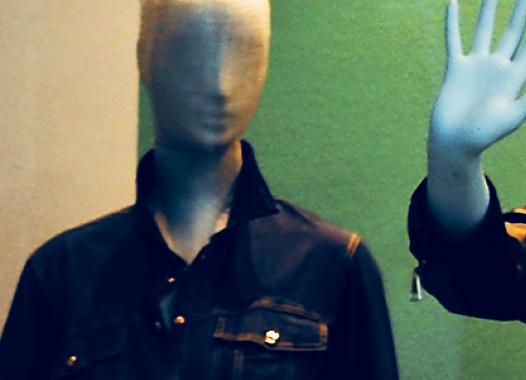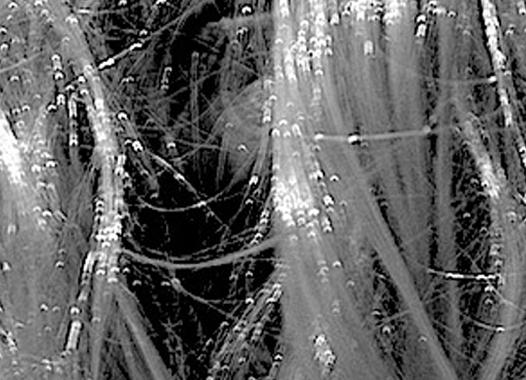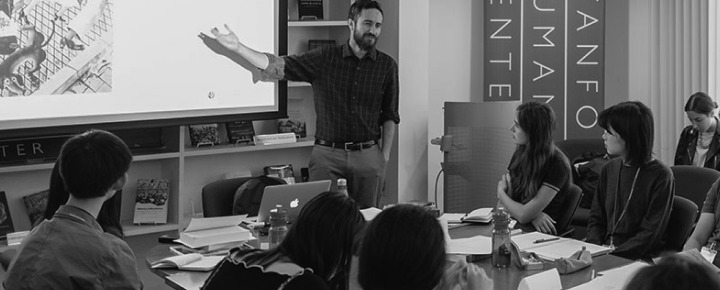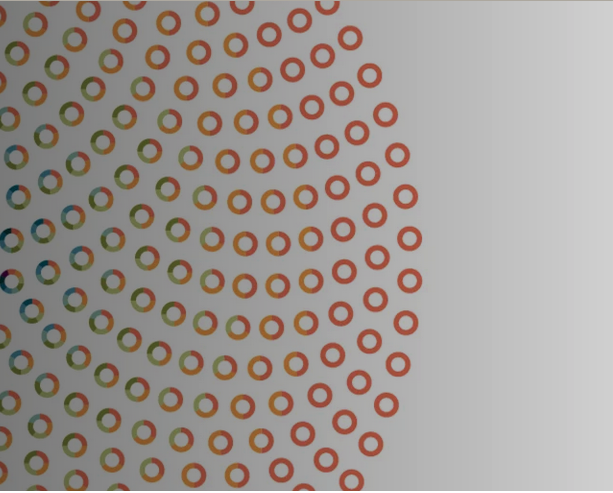
Like very many people, I have become a huge fan of the Italian writer Elena Ferrante’s novels. Ferrante, in case you haven’t heard, has become an international phenomenon. She has acquired a certain notoriety not only because her writing is very intense, but also because no one outside a small handful of people has any idea who she is, or if she is a she. Her novels, whether in Italian or in English, are irresistible—less like sugar is irresistible, and more like pain is irresistible. What about these novels is irresistible is not so simple to say. Journalistic responses have tended to focus on something like the powerful reality of the characters and the impossibility of not identifying with them: “Elena is not destroyed” when she discovers her lover cheating on her, declares Roger Cohen, apparently with some relief, in The New York Review of Books. There has not been, though, much consideration about how exactly Ferrante’s writing makes those characters and their lives seem powerful. “Speed is one of the defining qualities of reading Ferrante,” observes Joanna Biggs in The London Review of Books, but without locating the accelerator. James Wood, whose New Yorker article spawned much of the Ferrante cult in the English-speaking world, is onto something when he notices, of the main character in I giorni dell’abandono that there “is a foul brilliance in how Ferrante sticks with the logic of Olga’s illogic.”
But how does Ferrante stick to illogical logic? How does her style create the irresistible? Here is a working hypothesis: Ferrante’s signature tic is the run-on sentence, a style more obvious in English translation than in Italian, run-ons are grammatically suspicious in English but normal in Italian. But even in Italian, Ferrante’s habit of running independent clauses together is distinctive. Here is a small example taken from the first page I flip to, from the last of the Neapolitan novels, Storia della bambina perduta: “Ma non mi convinceva, non gli credevo, esprimeva pareri entusiastici sul lavoro di troppe donne” (219). “But he didn’t convince me, I didn’t believe him, he expressed enthusiastic opinions about the work of too many women” (Ann Goldstein’s translation, which I’m quoting throughout). Ferrante deploys the run-on to create a momentum that is headlong and occasionally breathless but still intimate—here you are, inside the operation of Elena’s head, everything she thinks coming out in the order it occurs to her, she is a subtle thinker because she sees that someone praising the work of too many women, paradoxically, does not take women seriously, maybe even denigrates them, and suddenly there is not only personal introspection but also a history, a storia.
And as a storia, the momentum is also manipulative. At least, it is the effect of a stylistic technique: this sentence is not Elena Greco speaking in a rush, slightly out of control, a real person thinking through something logically illogically. This is Elena Greco, or Elena Ferrante (who is the narrator here?), retrospectively recounting events and recreating the rush of the moment as part of her affectionate and yet also vindictive urge to represent Lila (the novels begin with Lila’s disappearance). Even as you are caught up in the momentum of Elena’s thoughts, you are also aware—this is one of the real pleasures of the books—that Elena the narrator is, usually, making fun of the naiveté or stupidity of Elena the character, or the silly slogan’s of an era (“we used such language” is a common refrain), or the ridiculous historical narratives that people regularly trot out. Ferrante, or Elena, pities, savors, or demolishes the intensity of the reactions by situating them in a much broader history. The four so-called Neapolitan novels depict an intense relationship between two women, but they also create an arc that amounts to a history of postwar Italy. The coordination of interior life and social life has been one of the oldest problems of the genre of the novel, and the run-on sentence is Ferrante’s technique for reworking it. “But he didn’t convince me, I didn’t believe him, he expressed enthusiastic opinions about the work of too many women”: the sentence registers Elena’s agitation, declares her growing suspicion of her lover Nino, displays her intelligence, catches both those reactions as part of a broader history from the emergence of feminism in Italy in the 1970s and its awkward, intimate relation with political shifts from Marxism to Socialism to Camorrists to the digital world, and so on. The retrospective narration performs a structural function throughout, though it never becomes entirely dominant because the run-on sentences won’t let it: the speed of the novels is an urge to know what will happen, the building of a forward historical and narrative momentum, but also an urge to watch an argument, already worked out, unfold. Elena’s relation to Nino, for instance, is not simply a personal train wreck that readers can or can’t identify with. The two characters are also—I’m not quite sure what else to call them—allegorical figures, alternately manifesting the relations between men and women, feminism and government, literature and politics, art and life: two abstract entities entangled in a perennial, but also curiously specific, battle.
Elena and Lila, the two brilliant friends, have a very intense relationship, but they also figure the difficulties of mimesis itself: Lila lives, Elena writes, presentation and representation, manifesting life in prose, worrying about whether one is eclipsing the other as writers have been doing since Plato and Aristotle. Because of the run-on sentences, because of the constant forward motion of the writing, Ferrante’s allegorical gestures never resolve into a simple message or political position or historical signifier, or a tedious novel about novels. Nor do they have a lot of faith in “reality” as a stable referent (the scene of the Naples earthquake is especially interesting in this respect). Ferrante’s run-on is not like a long Henry James sentence, which declares long before you get to the end of it that there is a brilliantly worked-out logic that you’d better slow down and grasp, and that what you will grasp at that moment is reality itself. Still, one thing that people including me like about the novels is that they somehow feel real. In Ferrante, you usually have very little idea what the apartments look like (rich with a view; poor with no bathroom), and very little idea what Elena and Lila look like (blond and plump; brunette and skinny). Elena periodically stresses she wants to look pretty, or changes her makeup to something more bourgeois, or mentions the model of a car or the location of a beach house, but that is about it. I think that the realism of the novel comes not from Flabuert-like detail but from the ability of a sentence to coordinate detail and history without quite resolving into either. So (an example Woods also points to) when the guests at Lina’s wedding realize “the wine wasn’t the same quality for all the tables,” Elena-the-character realizes in a flash that the “plebs were us.” But the speed of the narrative prevents this observation from turning into unfurled Marxist theory or interiority figured through enology. Ferrante’s run-on sentences are the mechanism for producing this reality effect. They deny, at the micro-level, any logical cohesion or narrative arc or life story, even as they are part of a retrospective narration whose end is never really in doubt. Elena, unsurprisingly, is not destroyed.
It sometimes seems as if she wishes she had been, though. The denial of logical cohesion, and the denial of historical narrative, often takes the form in Ferrante’s writing of a denunciation of art itself. There is throughout her novels a furious disavowal of “literature” as just “stories,” an anger and disgust that regularly nearly collapses into despair. Here is the last sentences of the last novel. “A differenza che nei racconti, la vita vera, quando è passata, si sporge non sulla chiarezza ma sull’oscurità. Ho pensato: ora che Lila si è fatta vedere così nitidamente, devo rassegnarmi a non vederla più” (451). “Unlike stories, real life, when it has passed, inclines toward obscurity, not clarity. I thought: now that Lila has let herself be seen so plainly, I must resign myself to not seeing her anymore.” Real life has no clear trajectory or boundaries, and the great weakness of stories is their urge toward making clear and sharp what is not. “Devo rassegnarmi” means, among other things, I must resign myself to the impossibility of literary presentation, the impossibility of manifesting a life in such a way that is not clarifying and simplifying: a journey to personal development, the unfolding of a thesis, some other stupid cliché. My novel, declares Ferrante, is at some level, as all literature is, a futile, misleading, failure. I do not think she is kidding.
But the obligation to resignation only happens in a non run-on sentence (“Unlike stories, real life, when it has passed, inclines toward obscurity, not clarity”). Grammatical perfection, so to speak, is the source of the despair. The last lines offer the moral the run-ons deny. There is no doubt about subject, verb, and object, and the result is a mini dissertation about the meaning of history in our time, a summing up of what Ferrante’s vision of an epic sweep through modern Italy amounts to: history no longer progresses, the idea of modernity as progress is foolish, the stories we have been telling ourselves are absurd, literature itself is absurd. The vitality of Lila and Elena and everything they embody, plainly seen for a moment, will not be seen again. You are closer to real life when you tend to obscurity, when, you are, quite literally, not in art or representation of any sort. All of which means: the final sentences, neatly grammatical, do the opposite of what they say. They clarify, and lose the life they say will be lost. They lose it by saying it will be lost.
Ferrante’s run-on sentences, on the other hand, do not manifest a thesis even as they constantly invoke one. They do not tend toward simple obscurity either—obscurity too is a thesis, as the final sentences clarify. Her run-on sentences do not offer a mini-narrative of historical progress, or a journey of personal development. Theirs is no allegorical formulation to be decisively deciphered. Instead, they offer a sense of going somewhere, of life being lived, happening and continuing to happen. History has not stopped in run-on sentences, they do not offer congratulations on the knowing rejection of past simplicities, they keep going, you don’t know where. Ferrante’s run-ons manifest life in on-going motion.
The run-on sentence offers a glimpse of how, or why, Ferrante is what everyone says she is: a great novelist. The compulsive attraction of these novels—I realize I am putting this too abstractly—lies in their ability to fashion a sense of a life with a future by rejecting, at a grammatical and formal level, two broad, contemporary dispositions at the same time: 1) old and current progressive historical narratives as silly stories (the Bildungsroman, feminist empowerment, the triumph of the proletariat, the management of liberal technocrats, the emancipatory digitization of life, and so on); but also 2) a pervasive, often theological resignation in contemporary life that “this is the way things are,” the bare life of a world catastrophe grounded in economic, ethnic, biological, environmental, racial, sexual, perhaps even national ontologies that we can do nothing about and that will never, ever change (Naples is often invoked as the allegorical representation of all these things). These two dispositions can be linked together—Jacques Rancière connects them when he argues that the “ethical turn” in art, and the war on terror in politics, both depend upon a “certain theology of time, the idea of modernity as a time destined to carry out an internal necessity, once glorious, now disastrous” (201). “The modernist rigour of an Adorno,” writes Rancière, “wanting to expurgate the emancipatory potential of art of any form of compromise with cultural commerce and aestheticized life, becomes the reduction of art to the ethical witnessing of unrepresentable catastrophe” (201). Ferrante’s run-on sentences, it seems to me, are responses to these political and artistic stakes. No other writer I can think of at the moment offers such a compelling grasp of, and maybe escape from, these two dominant trends, no other writer I can think of shows as effectively what misleading stories “progress” or “catastrophe” are (are they even different stories?). Run-on sentences generate a future, but they do not do so with an “internal necessity” that then goes wrong. "Storia" means both history and narration. But it is not the word she uses in the second-to-last sentence, which is “racconti—“accounts” or “tellings.” Ferrante’s run-on sentence avoids accounts by telling stories and histories that actually are going somewhere. Storia is the word Ferrante returns to for as the title for all the sections of the Neapolitan novels. The momentum is irresistible.
Join the colloquy
Join the colloquy
Elena Ferrante
more
When it comes to Ferrante, we may feel, indeed, stranded on a beach, at night, left there to collect the tokens of her presence and whereabouts in this world. The tokens are words and in them we find the lucid exactness of worlds inhabited by characters who are as vivid and real as she is elusive. They deal with what the author has called frantumaglia, a term she borrows from her mother and her Neapolitan dialect (frantummàglia): "it referred to a miscellaneous crowd of things in her head, debris in a muddy water of the brain. The frantumaglia was mysterious, it provoked mysterious actions, it was the source of all suffering not traceable to a single obvious cause" (Frantumaglia, Kindle edition). Ferrante’s compelling narrative dives into terribly muddy waters and surfaces from them with the strength of truth, where truth means not moral clarity but the unmistakable verity of naked human emotions. The origin of the word frantumaglia is very material; it refers, in fact, to a pile of fragments from broken objects that cannot be pieced together again.
This Colloquy seeks to bring together in one ongoing conversation, from a variety of intellectual perspectives, the voices of the international discourse about Ferrante’s novels and the significance of her work in the contemporary literary landscape.
As for who Ferrante might be, I propose again her response to a reader who sought to know her identity: "[. . .] what is better than reading in a room that is dark except for the light of a single reading lamp? Or what is better than the darkness of a theater or a cinema? The personality of a novelist exists utterly in the virtual realm of his or her books. Look there and you will find eyes, sex, lifestyle, social class, and the id" (Frantumaglia, Kindle edition)




















